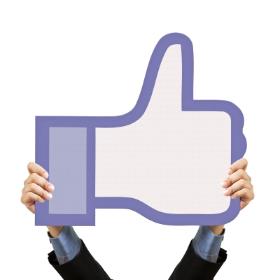What is the Real Value of My Facebook Marketing? - John Bohan

Welcome John Bohan, our newest MediaBizBlogger.
Part 1: The Ever-Present Social-Media Measurement Question
According to eMarketer, $6.6 Billion will be spent on Facebook advertising this year and potentially hundreds of millions more on community management. Yet the industry lacks a clear and compelling sense of how to measure Facebook marketing. Advertisers often like measurement to fit into easy-to-explain metrics so that there is a definable goal, even though it may offer very little value.
More than in any other medium, brands that market themselves on Facebook are guilty of using weak metrics to measure billions of dollars of spend. The reason is that Facebook marketing is anything but easy to measure, because, among other things, there are so many moving parts. Unlike other media, there is not yet a core group of metrics that have been used for years to measure success.
For example, traditional digital has Impressions, Clicks and Conversions. TV has Reach & Frequency. Print has Circulation and Readership.
With Facebook there are Paid Impressions, Earned Impressions, Clicks, Organic Reach, Engagement, Viral Reach, Impressions, etc…. Then, after all the media has run, one has to determine the value of all the new fans acquired.
It's no wonder the industry has often defaulted to an "easy-to-understand" metric, cost per fan, to a get a sense of value. Since late 2008, media
departments have negotiated with Facebook vendors for the lowest “cost per fan,” and the one with cheapest rate usually wins. Money is spent. Fans go up and everyone is seemingly happy. For my part, I am always amazed how comfortable people are with such poor data.
We all know that this is not the best way to measure the success of Facebook marketing but, in large part, it is widely used and hasn’t changed.
So what is the answer? How do you measure the value of your Facebook marketing?
Below is a three-step prescription:
Step 1 – Likes (The Past)
While number of Likes has been the de facto standard, it is rather meaningless, as most fans are dormant. Even worse, fans that spread negative sentiment are also counted as a positive on the Like scale.
Step 2 – Facebook Insights (The Past and Present)
Progressing to the next step, there are four Facebook Insight Metrics that matter most. All of these are Page Metrics.
a) Organic Reach - The number of people that saw your post in their news feed, ticker or on your page. In large part, this is the number of your fans that saw your post.
b) Viral Reach - The number of unique people who saw your post from a story published by a friend. These stories can include liking, commenting, or sharing your post, answering a question or responding to an event. In large part, these are the friends of fans.
c) Engagement– The number of times users engage on your page, including clicks on post likes, comments, shares, as well as clicks on photos, videos, outbound links, etc.
d) Impressions – Total impressions generated by your page via your post or visits to your page.
While paid media metrics (Impressions, Reach, Engagements, and Fans) are also important to consider, the best media campaigns will positively affect the above four metrics. In essence, you can measure the strength of "the media" by watching how it affects "the page."
The smartest brands and agencies are looking at both media and page metrics and determining how one affects the other. To look at each in a silo is like running a banner campaign with the goal of driving sales but not measuring conversions. The media and the page are completely intertwined and should be treated as such.
So, what is the problem with stopping here and just looking at the media and the page to measure success? It is only half the story, and there is real value in looking deeper.
For example, much of the Engagement could be negative. In essence, a brand’s most derogatory and influential fans could be spreading negative news. If a brand uses the premise that bigger is better, it could be doing itself a great disservice.
Facebook metrics alone also fall short of providing insight on what is impacting Reach and Engagement as well as the demographic/psychographic make up of your best fans. Facebook Insights lacks detail on:
- What Post type drives the Best Engagement?
- What is the ideal Frequency of Posts?
- Who are the Best Fans?
- Who are the Worst Fans?
Step 3: Proprietary Metrics (Present and Future)
So, where does this lead us?
The next and best step in measuring Facebook Media and Pages is through the use of proprietary technology and analytical tools that tap into the Facebook API and provide:
An Overall Page Score that measures Page Health through a combination of Page Engagement, Influence and Sentiment rankings, i.e. unique algorithms and sentiment tools that take into account:
Frequency of Engagements
Influence of Fans
Sentiment
Sentiment Score as a separate metric that measures the positivity or negativity of the page.
Fan Groups that allow you to categorize, track and analyze Super Fans, Influencers, and Villains. Measuring total fans is useless; however, keeping track of your best fans and gaining an in depth understanding of their characteristics and behavior, with the intent of acquiring more that look just like them, is invaluable.
By using the above metrics together, you will get a much better guide on the strength and weaknesses of your pages and fans. In addition, by using the right analysts to dive into the data, you will gain tangible results that increase engagement, build better fans, and lead to sales.
In the next 12 months there will be evolutionary advances for gaining a better grasp on how to leverage Facebook as an asset to build advocacy and results. The question is, why has it taken the ad industry this long to use good data to assess billions of dollars in spending, and why would anyone remain on the sidelines only using the "Like Scale" or even Facebook metrics as the guide to results?
This article is Part 1 of 3. Part 2 will use the above analysis in a case study, and Part 3 will look at how you can use data to generate better results.
John Bohan is the CEO & Founder of Socialtyze (www.Socialtyze.com), a 5-year old Social Marketing & Technology firm that specializes in helping top brands and agencies to assess the value of their social marketing efforts and then using data to execute relevant, innovative strategies that stimulate brand advocacy and sales.
Marketing & Technology firm that specializes in helping top brands and agencies to assess the value of their social marketing efforts and then using data to execute relevant, innovative strategies that stimulate brand advocacy and sales.
Check us out on Facebook at MediaBizBloggers.com
Follow our Twitter updates @MediaBizBlogger
The opinions and points of view expressed in this commentary are exclusively the views of the author and do not necessarily represent the views of MediaBizBloggers.com management or associated bloggers. MediaBizBloggers is an open thought leadership platform and readers may share their comments and opinions in response to all commentaries.
[Image courtesy of FrameAngel/FreeDigitalPhotos.net]


